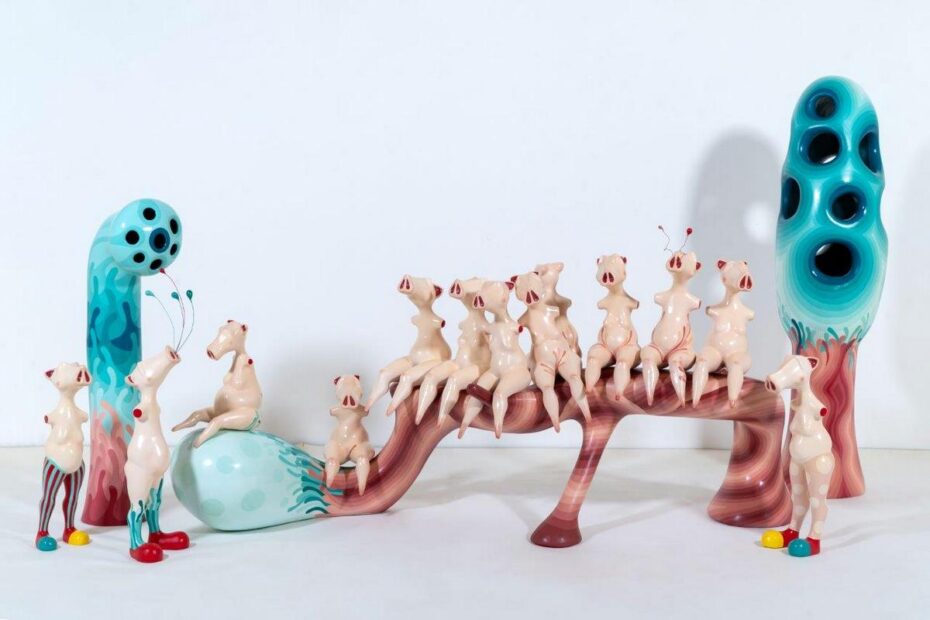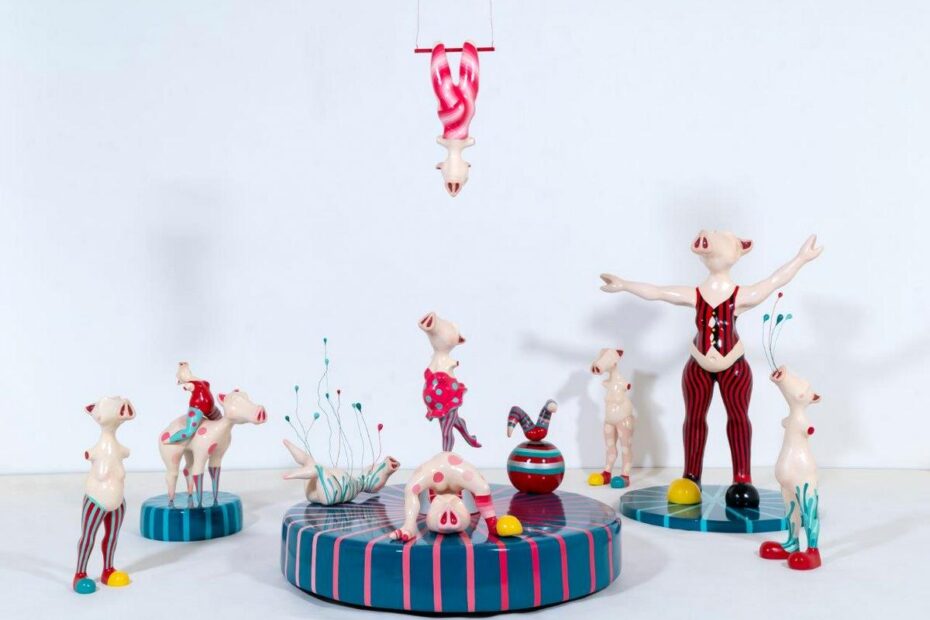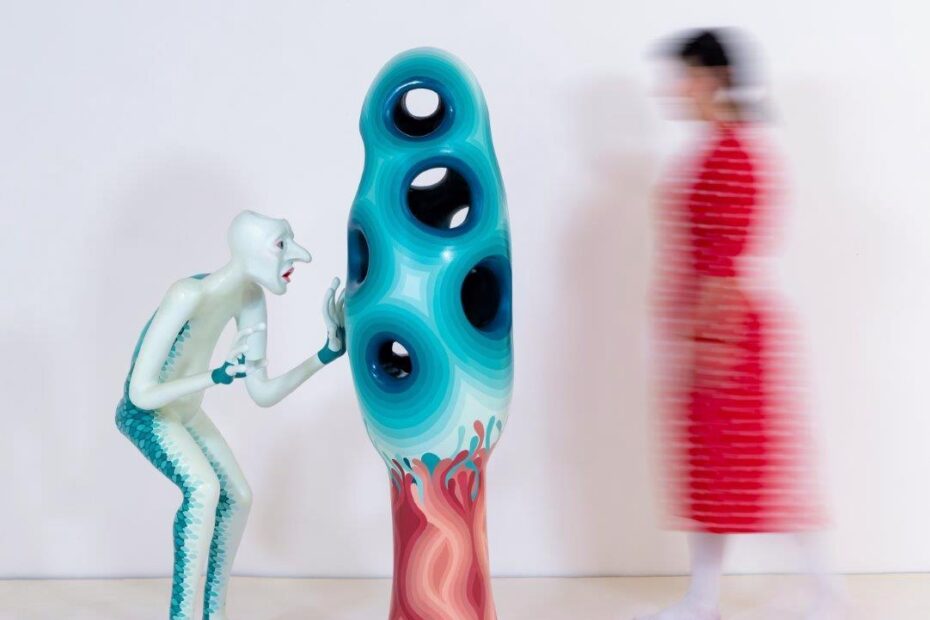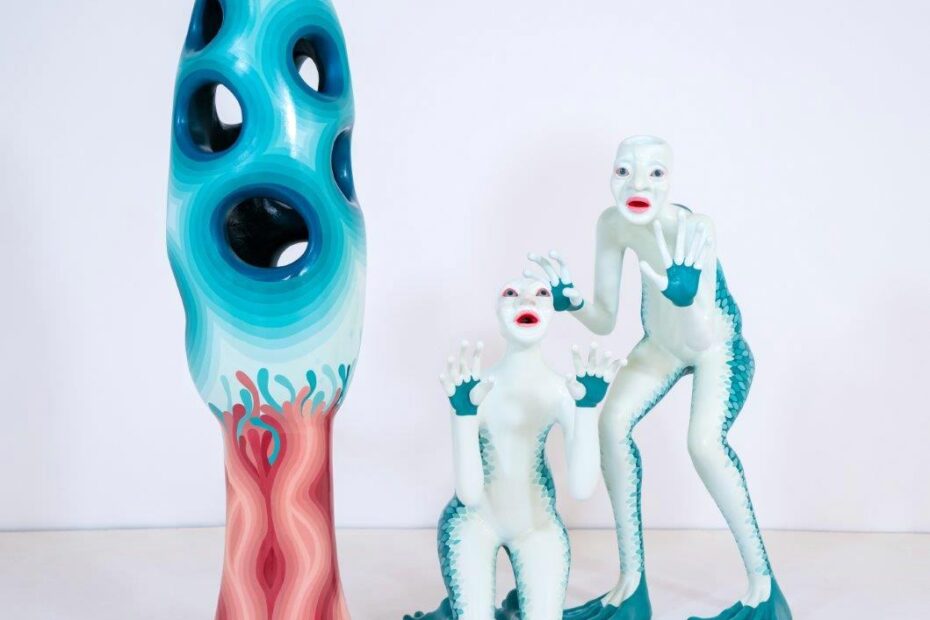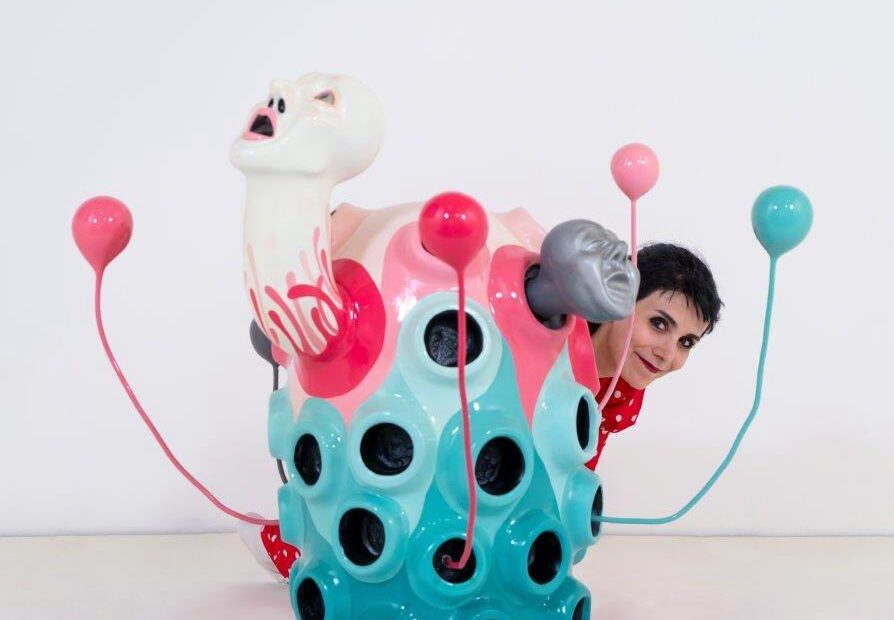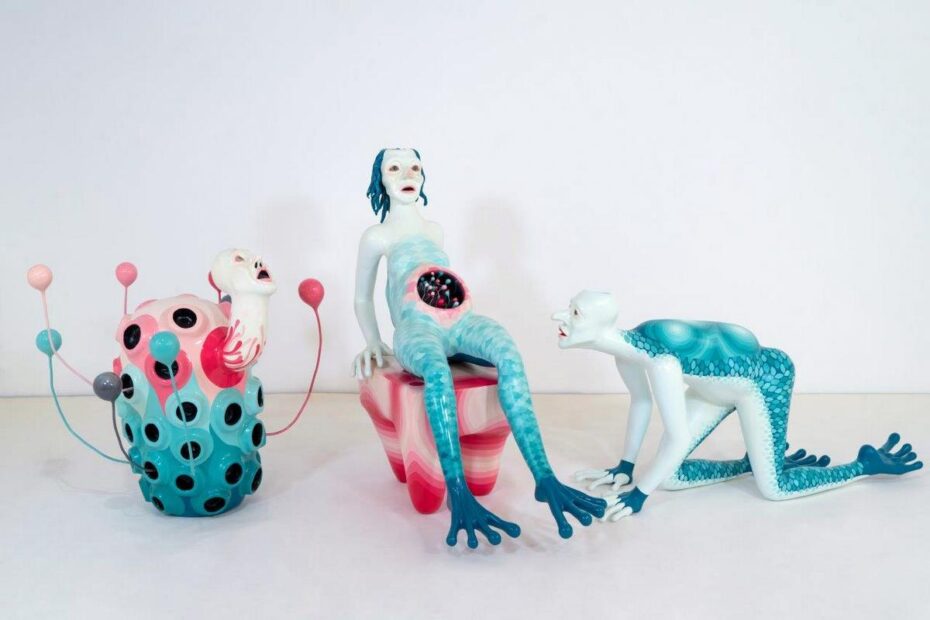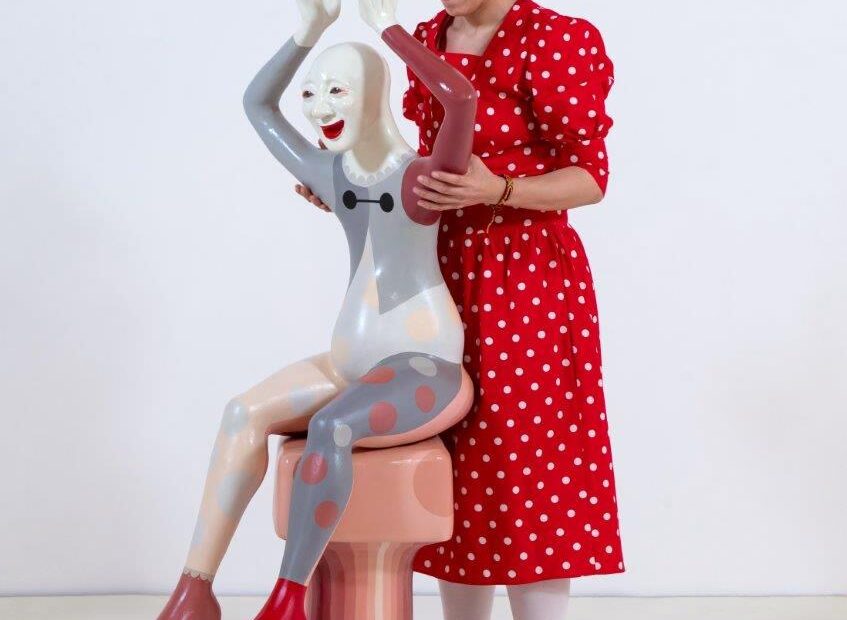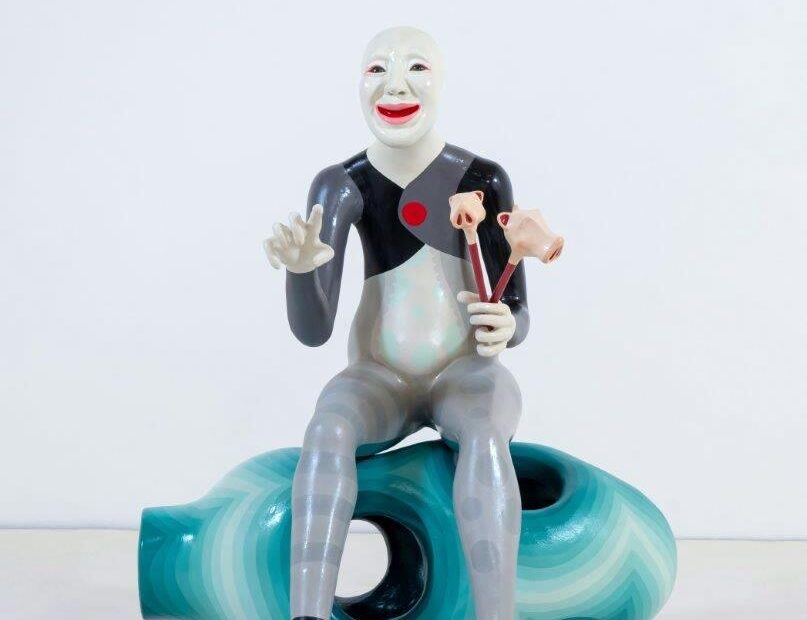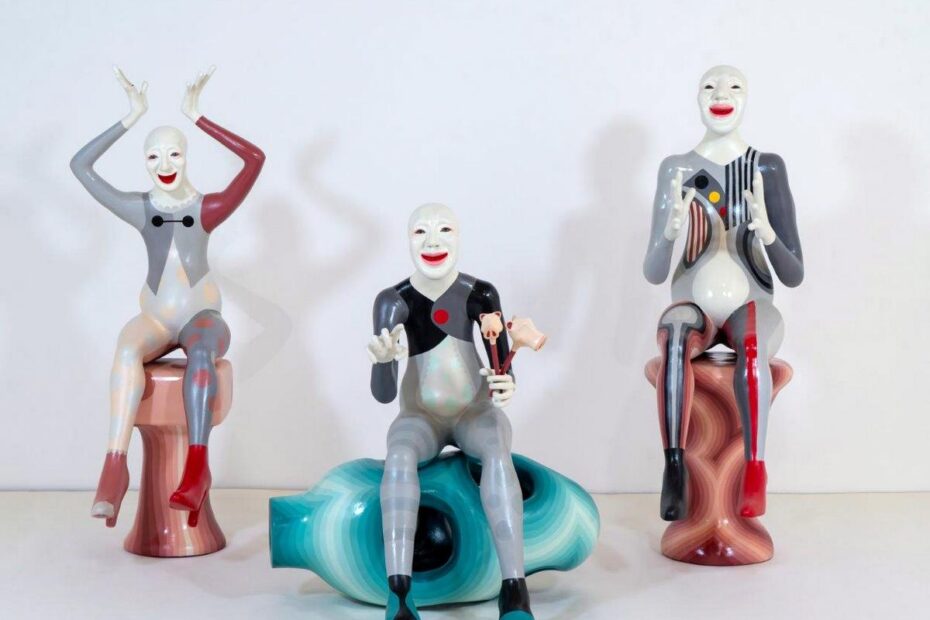Solo exhibition of Sarah Tavana
Opening on 29th September 2023
On view until 13th October 2023
In her interpretation of the book Kappa by Japanese Author Ryunosuke Akutagawa, Sarah Tavana brings these mythical Japanese creatures into the real world. Kappas are humanoid in form, amphibious, and sustained by water held in an indented bowl on the top of their head. The Story is about Patient 23, hiking in Kamikochi when he spots a kappa. He gives chase and tumbles down a hole into Kappaland. Religion, morality, justice, economics, and death are all examined in his sojourn into this strange land. When the patient eventually returns to the human world, he becomes disgusted by humanity and, like Gulliver, is locked away, his truth-telling being considered “madness.”
In highly sophisticated and totally handmade sculptures of Sarah Tavana, she, in fact, draws on aspects of our own world. Mirroring elements of our own society, she presents imagery – a world- that, though eerily familiar, is much more worrisome than our own—a world where children do not want to be born.
In the artist’s wild imagination, a Circus is where she places performing characters, and their busyness serves to underscore the fact that nothing will happen to change their existence. There is no plot, and it appears all characters are moving in a circular timelessness. Creatures that are tramps, clowns, and trapezists all engaged in an unending absurdity and, much like animals in real circuses, are controlled through fear and physical abuse.
